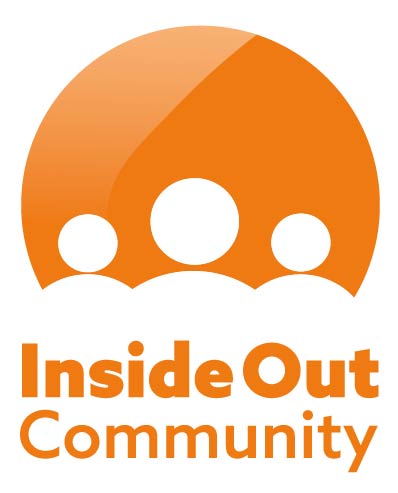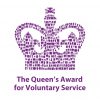The Case for Arts in Mental Health
The Case for Arts and Mental Health
Can participation in the arts make a real contribution to recovery from mental ill health? Can the arts contribute to a more sustained state of well-being?
The testimony Inside Out has received from participant students in evaluations and surveys during10 years of running therapeutic arts programmes suggests the answer to both these questions is an emphatic yes (see Inside Out Survey 2010 listed on the About Us page). This largely anecdotal evidence is strongly supported by UK research which identifies measurable health benefits and makes the case for funding community arts and wellbeing programmes (Hacking S, Secker J, et al 2007; Clift S. Camic P. et al 2009)
In a review of the evidence for Arts and Health Walford (2010) identifies improvements widely experienced and attributed to participation in arts and health programmes. These include: improved motivation; increased social engagement; enhanced self confidence and self esteem; increased resilience and a more relaxed state of mind; better concentration; increased self expression and self understanding; and a stronger more positive sense of self. These outcomes can be achieved by people with more enduring problems of mental ill health as well as those experiencing less severe, but nonetheless incapacitating, episodes of distress in their lives that may manifest itself as depression or anxiety.
Redfield Jamison (1994) in a small scale study of behavioural, cognitive and mood changes during periods of intense creativity, in a group of artists and writers points to an increase in enthusiasm, energy, speed of thought, concentration, emotional buoyancy, confidence and wellbeing as being concordant with artistic output.
Secker (2011) has highlighted a number of experiences related to participation in therapeutic art groups that signify positive outcomes in themselves or lead to valued improvements: feeling more connected to others; perceiving art as a socially valued, inspirational and meaningful activity; experiencing art work as an opportunity for self expression; engaging in art activity that offers ‘time out’ from the anxiety laden preoccupations of everyday life; the discovery and enjoyment of a creative Self and the development of artistic skills which may lead to re-defining of personal identity in a more positive way.
All art can of course take you ‘into yourself’ as well as ‘out of yourself and it is this interior life from which some of the most meaningful artistic expression comes. It enables students to explore and express their lived experiences and emotional life – often through the safety of symbolic images, experiences which may have been suppressed and overlaid by the illness metaphor. There is in art the possibility of self realisation, of finding the truth of oneself and living more freely from that authentic core. Teal (2008) regards exploration of feelings and identity in the context of arts and mental health programmes as a significant step forward in the healing process. She quotes one students reflection ‘you get to know all sorts about yourself through art … I could see I was beginning to express myself … art help me find myself again’
One seemingly important – though paradoxical, factor in the process of achieving positive outcomes in community arts and mental health projects, is that such groups are explicitly not therapy groups in any direct sense but are first and foremost creative arts groups. They are usually led by professional artists, and the primary aim is to encourage and develop an individual’s creative expression through various art forms. Through engagement in the creative process participant students discover for themselves the ways in which making art in the company of others can be a healing experience that helps improve and sustain wellbeing and meets many of their desired health and wellbeing outcomes.
At Inside Out group values and the facilitating style of the lead artist are also important factors in outcome. Many people come to community art groups discounting their creative ability, carrying – as many of us do, negative attributions internalised from others in our earlier years. Inside Out has three key values which thread through interactions within the group – our rules of engagement. They are: (1) warm acceptance (2) inspirational engagement (3) positive validation of participant students and their creative achievements. We want Inside Out groups to be warm, friendly and safe places; places where you can feel inspired by the activity, the facilitators and others to explore your creative self; a place where you can immerse yourself in the flow of the groups creative energy; discover more of yourself and your creative potential and have that positively affirmed.
Perhaps the key question for people challenged to find a pathway to an improved more sustained level of mental health by the emotional storms that can blow through any life, is not do arts and wellbeing projects like Inside Out work – there is now clearly an evidential base that do, but can they work for ‘me’! Recovery pathways are many and varied; an exploration of personal creativity and the healing arts is one such pathway which for many people can lead towards a more creative and emotionally sustaining life (Watkins 2007). As one Inside Out participant student put it ‘I’m a creative person and creativity needs to be at the heart of my recovery’.
Redfield Jamison K. (1993) Touched with Fire, Simon and Schuster, New York
Secker J, Spandler H, Hacking S, Kent L, Shenton J, (2007) Art for Health’s Sake; Mental Health Today July/August 2007
Secker J. (2011) Mental health and art; Mental Health Today, May 2011
Teall W. (2008) Start: a creative approach to mental health care; Journal of Mental health 5, 4.
Walford E (2010) Arts and Mental Health available as a download www.towersabove.co.uk/research on arts and mental health
Watkins P (2007) Recovery – a guide for mental health practitioners. Churchill Livingstone, Edinburgh
Copyright Peter N. Watkins (2013)


